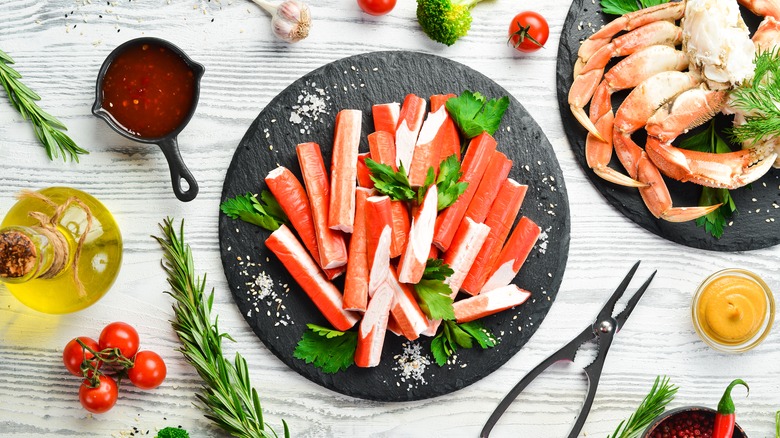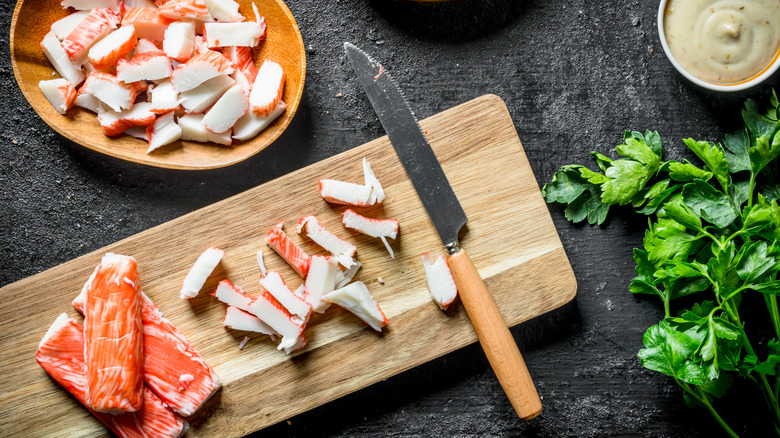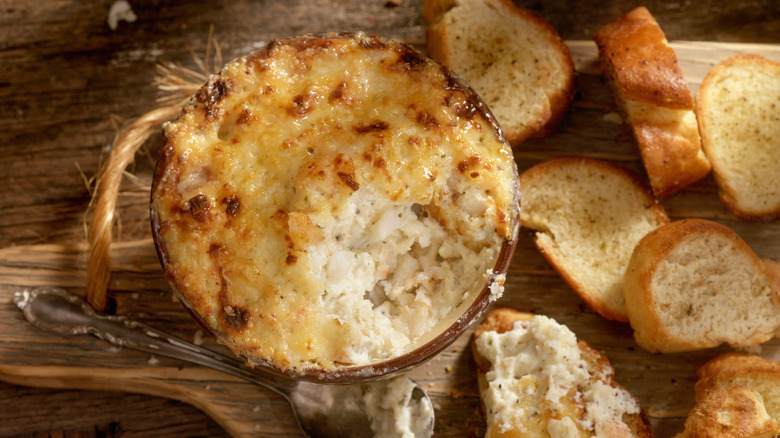Does Imitation Crab Need To Be Cooked?
Seafood is satisfying, uplifting, and luxurious. Whether you like a spicy ceviche, pan-seared scallops, or oysters on the half shell, there are a million and one ways to enjoy a spread of seafood. However, seafood isn't always the most affordable bounty at the supermarket, especially crab. But thankfully for foodies with a penchant for this crustacean, imitation crab is an affordable and deceptively delicious alternative to its fresh counterpart. But as it goes with any seafood, knowing how to cook it is essential for food safety, which begs the question, does imitation crab need to be cooked?
Imitation crab is typically made from pulverized pollock, starch, sugar, salt, oil, and water. Once these ingredients are combined, the mixture is cooked and shaped to resemble the appearance of authentic crab meat. Imitation crab is also pasteurized, which helps to prevent the growth of bacteria responsible for food-borne illness. Because it is pre-cooked and pasteurized, imitation crab does not need to be cooked before consumption. Although you don't need to cook it to safely enjoy it, imitation crab only lasts three days when properly stored in the refrigerator; however, it can last up to six months when frozen.
Cooking imitation crab
Just because you don't have to cook imitation crab, doesn't mean that you can't. Cooking imitation crab can give it a delicate char and added flavor from being cooked in spices and seasonings. But what's the best way to cook imitation crab?
Ultimately, how you cook imitation crab depends on what you're using it for, and there's really no wrong way to do it. Searing it on the stove with a bit of oil is quick and easy, but to give it a deep, golden-brown crisp, baking it with a drizzle of oil or butter and dusting it with seasonings will yield a flavorful batch of imitation crab with a slightly crunchy mouthfeel. Don't hesitate to bust out the air-fryer for cooked imitation crab in a flash. If you want something smokey, consider firing up the backyard grill to cook it, but if preserving its original texture and moisture content is your goal, boiling crab imitation is the method for you. If cooking imitation crab just sounds like too much work, simply enjoy it as it is!
Cold and warm imitation crab dishes
Whether you prefer it cooked or cold, the choice is yours to make. However, each preparation method lends itself better to different types of dishes — cooked imitation crab works best in some recipes, while cold imitation crab is more suitable for others.
Although it sounds elementary, cold imitation crab is ideal for cold dishes. You can dice it straight from the package and use it to fill out a mixed green salad or slice it vertically to add protein to vegetable spring rolls (don't forget the peanut sauce). Sushi, anyone? Cut the imitation crab into small pieces using a knife or food processor and roll it up with your favorite sushi ingredients — you'll hardly suspect that it's not authentic crab.
As for warm dishes, consider cooking imitation crab when you're preparing meals that are served hot. With the right seasonings and fixings, imitation crab cakes will surprise you with their bold flavor. Cooked imitation crab will also work well in seafood pasta dishes, full-bodied stir-fries, and creamy crab dip.
Whether you prefer it cold or cooked, take comfort in knowing that imitation crab is safe to eat uncooked. After all, safe eating is happy eating!


